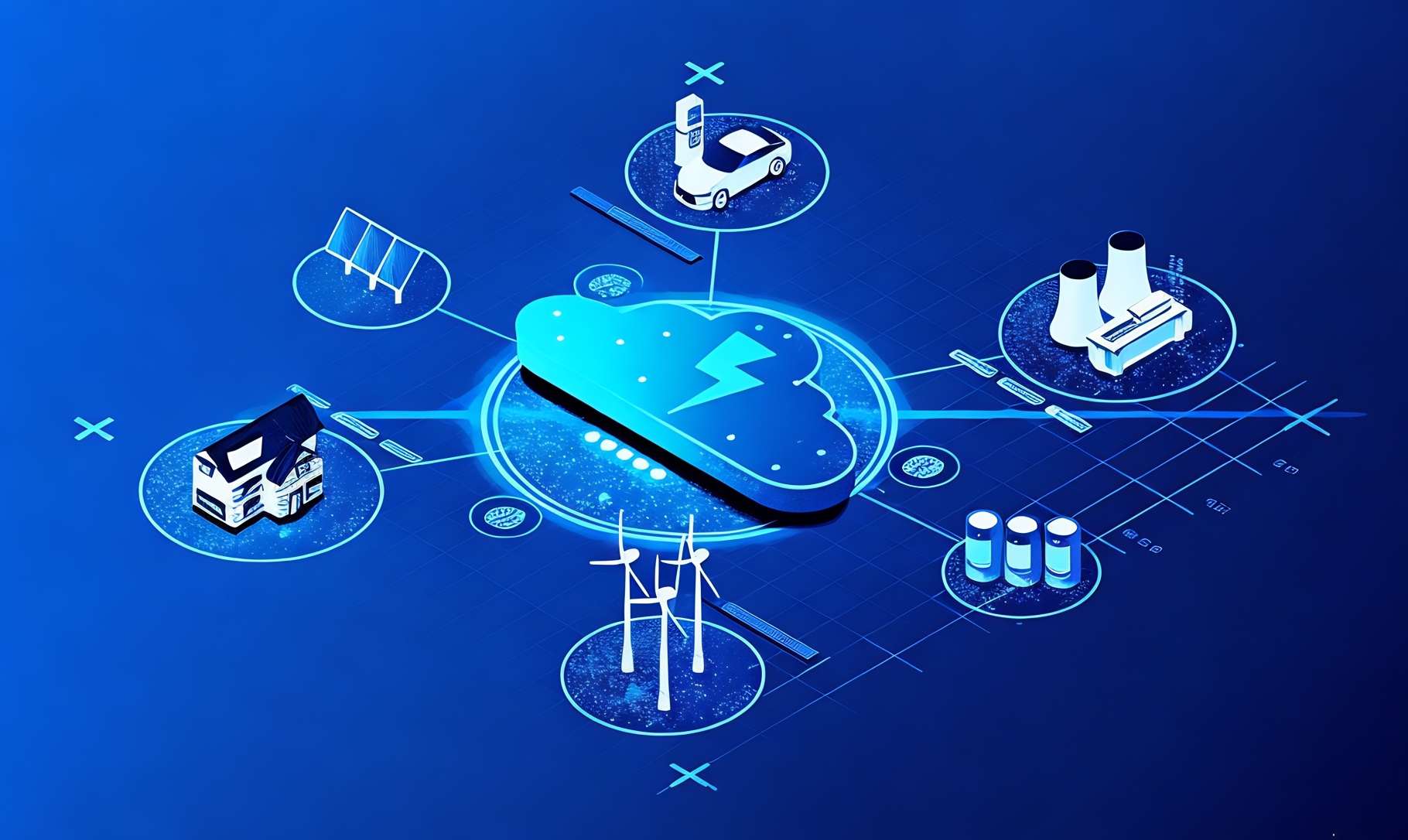
In the quest for a more resilient and reliable energy system, decentralized energy has gained significant traction. At the forefront of this movement are microgrids, localized energy systems capable of operating independently from the traditional grid. These innovative systems offer numerous benefits, from enhancing energy resilience to improving reliability. This Energy Brief explores the workings of microgrids, their applications, and the advantages they bring to the energy landscape.
The Limitations of Centralized Energy Systems
The traditional centralized energy model, where power is generated at large plants and transmitted over long distances to end-users, has served us well for decades. However, it has drawbacks, including vulnerability to large-scale outages, inefficiencies in transmission, and limited flexibility in integrating renewable energy sources. Decentralized energy systems, particularly microgrids, address these issues by localizing power generation and distribution.
What are Microgrids?
Microgrids are small-scale power networks operating autonomously or in conjunction with the main grid. They typically incorporate a variety of energy sources, such as solar panels, wind turbines, and battery storage, to generate and store power locally. This localized approach offers several key advantages, making microgrids a promising solution for enhancing energy resilience and reliability.
Enhancing Energy Resilience
One of the most significant benefits of microgrid technology is its ability to enhance energy resilience. In a traditional centralized grid, a single point of failure can disrupt power for thousands of customers over a wide area. Microgrids, conversely, can isolate themselves from the main grid during such events, continuing to supply power to local users. This islanding capability ensures critical services, such as hospitals, emergency services, and communication networks, remain operational during grid outages. By providing a reliable backup, microgrids help communities withstand and recover from natural disasters and other disruptions more effectively.
Improving Energy Reliability
Another advantage of microgrids is their potential to improve the reliability of energy systems. Because they generate and distribute power locally, microgrids reduce the dependence on long-distance transmission lines, susceptible to weather-related disruptions and technical faults. This localized generation also means that microgrids can deliver power more efficiently, reducing losses that occur during transmission. Additionally, integrating renewable energy sources within microgrids can enhance reliability by diversifying the energy mix and reducing dependence on fossil fuels.
Applications of Microgrids
Microgrid applications vary, ranging from rural communities to urban centers and industrial sites. In rural areas, where access to the centralized grid is often limited or nonexistent, microgrids can provide a sustainable and reliable power source. For instance, remote villages can utilize solar panels and wind turbines to generate electricity. At the same time, battery storage ensures a steady supply even when the sun isn't shining or the wind isn't blowing. This decentralized approach improves rural residents' quality of life and supports local economic development by enabling small businesses and industries to operate more efficiently.
In urban environments, microgrids can help alleviate the strain on the main grid during peak demand periods, reducing the risk of blackouts and brownouts. Commercial buildings, campuses, and residential complexes can install microgrids to generate power, reducing energy costs and contributing to a more stable and resilient urban grid. Industrial sites, with their high energy demands and critical processes, can benefit from the reliability and resilience offered by microgrids, ensuring continuous operation even during grid outages.
Integration of Renewable Energy Sources
Integrating renewable energy sources within microgrids is another critical aspect of their appeal. As the world shifts towards more sustainable energy solutions, microgrids offer a versatile platform for incorporating solar, wind, and other renewable sources into the energy mix. This not only reduces greenhouse gas emissions but also promotes energy independence. By generating power locally, communities and businesses can reduce their reliance on fossil fuels and the centralized grid, contributing to a cleaner and more sustainable energy future.
Smart Microgrid Systems
Furthermore, smart microgrid systems leverage advanced technologies, such as artificial intelligence and the Internet of Things (IoT), to optimize energy generation, storage, and distribution. These intelligent systems can predict energy demand, manage resources efficiently, and respond dynamically to changes in grid conditions. For example, during periods of low demand, excess energy generated by solar panels can be stored in batteries for later use. The microgrid can draw on this stored energy during high-demand periods, reducing the need for expensive peak power from the main grid. This smart management of resources enhances the overall efficiency and reliability of the microgrid.
Challenges to Widespread Adoption
Despite their numerous benefits, the widespread adoption of microgrids faces several challenges. One of the primary hurdles is the high initial cost of setting up a microgrid, which can be a significant barrier for small communities and businesses. Additionally, regulatory frameworks and policies need to evolve to support the integration of microgrids into the existing energy infrastructure. Collaboration between government agencies, utilities, and private sector stakeholders is essential to create an enabling environment for microgrid deployment.
Another challenge is the technical complexity of designing and operating microgrids. Ensuring seamless integration with the main grid, managing diverse energy sources, and maintaining system stability require advanced expertise and sophisticated technology. However, ongoing research and development in this field continually improve microgrids' efficiency, affordability, and ease of operation.
Conclusion
In conclusion, microgrids represent a transformative energy generation and distribution approach, offering various benefits that enhance energy resilience and reliability. By localizing power generation, integrating renewable energy sources, and utilizing smart technologies, microgrids provide a sustainable and reliable solution to the challenges faced by traditional centralized energy systems. While there are challenges to overcome, the potential of microgrids to revolutionize the energy landscape is undeniable. Microgrids will be crucial in shaping how we generate and consume power as we move towards a more resilient, efficient, and sustainable energy future.